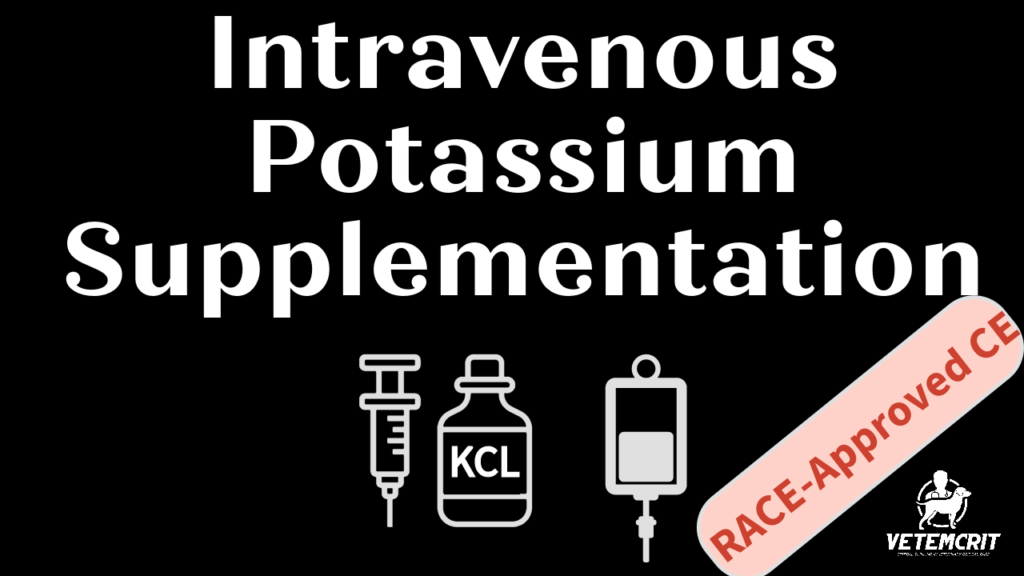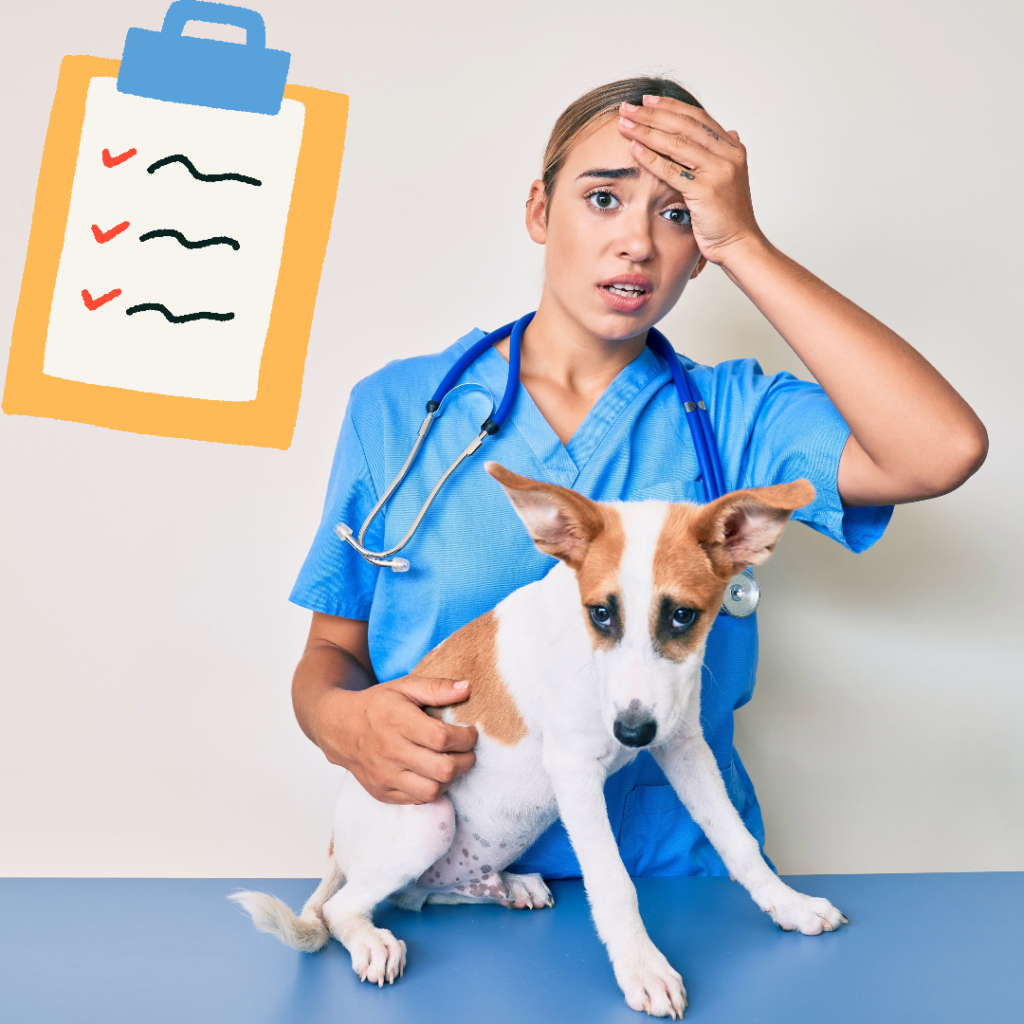Hypernatremia is defined as a serum sodium level above the reference range. It is a relatively infrequently encountered electrolyte disturbance in dogs and cats. In one retrospective study (Ueda et al. 2015), 5.7% dogs and 8.0% cats were diagnosed with hypernatremia. It was associated with increased case fatality rates in this population of patients. Understanding hypernatremia requires a comprehension of body fluid compartments, as well as concepts of the preservation of normal body water balance. The animal body maintains a normal osmolality between 280 and 310 mOsm/kg via Arginine Vasopressin (AVP), thirst, and the renal response to AVP; dysfunction of all three of these factors can cause hypernatremia (Mushin et al. 2016). In this post, I present a step-by-step approach to the hypernatremia in canine and feline patients. Further reading is recommended to deepen understanding of the physiology and pathophysiology of sodium and water balance.
A Diagnostic Approach to Hypernatremia
Step 1: If you have any doubts that hypernatremia is true, re-run the sample to make sure that this finding is consistent; also, if you plan to monitor sodium every 4-6 hours (recommended in cases of moderate to severe hypernatremia), it is prudent to have a baseline value on a machine that you are going to use for monitoring purposes (e.g. a point-of-care blood gas or chemistry analyzer).
Step 2: Attempt to identify the underlying pathophysiologic process or condition that was a primary cause of hypernatremia in your patient.
2.1 Collect a thorough history and review current medications
- Was there any exposure to high-sodium containing substances such as salty food, sea water, hypertonic saline?
- Was there any exposure to hyperosmolar agents or GI absorbants that could have led to osmotic diuresis or osmotic diarrhea resulting in pure water losses (e.g. mannitol, paintballs, activated charcoal)?
- Is the patient on diuretics?
- Does the patient have access to water at home or in the hospital?
- Does the patient have normal thirst when water is provided?
- Is there a history of GI signs or renal disease?
- Is there history of polydipsia and/or polyuria?
2.2 Perform a full physical examination and assess patient’s volume status (note: this assessment may be subjective and not very accurate in all patients with hypernatremia)
2.2.1 The patient is hypervolemic = Suspect Sodium gain
- Common findings on physical examination (PE): normal or high arterial blood pressure, chemosis (edematous conjunctiva), distended jugular veins, peripheral edema, body cavitary effusions (warning: effusions may be present in hypovolemic/normovolemic patients as well);
- Common causes of hypervolemic hypernatremia
- Salt poisoning
- Hypertonic saline administration
- Hyperaldosteronism (most common in old cats with hypertension due to aldosterone-secreting adrenal tumor; hypernatremia is ussually mild to moderate; these cats are commonly hypokalemic; serum aldosterone levels should be sent out if suspected);
2.2.2 The patient is normovolemic = suspect pure water deficit
- PE: normal perfusion parameters; patient may be dehydrated but not hypovolemic;
- Common causes
- Primary hypodipsia (usually young animals that “don’t like to drink water”)
- Central diabetes insipidus (may be congenital or secondary to intracranial disease, TBI); will have history of PU/PD if able to drink and has access to water;
- Nephrogenic DI: congenital, acquired (see list of causes in supplemental box 3-2)
- High environmental temperature
- Fever
- Inadequate access to water
2.2.3 The patient is hypovolemic = suspect loss of hypotonic fluids
- PE: evidence of hypoperfusion (elevated heart rate, fair femoral pulses, +/-arterial hypotension, etc.); not always present; history of GI or renal disease, 3rd spacing;
- Common causes
- Renal losses (usually polyuric): due to osmotic diuresis (e.g. mannitol, hyperglycemia), diuretics (furosemide, etc), CKD, AKI, post-obstructive diuresis
- GI losses: history of vomiting/diarrhea, GI obstruction/ileus
- 3rd spacing: abdominal effusions (pancreatitis, peritonitis, other), pleural effusions
- Cutaneoous losses (e.g. via burns)
2.3 Perform urinalysis +/- urine sodium, urine creatinine, urine osmolality (ideally prior to fluid therapy) + plasma creatinine, plasma osmolality
Note: USG measurement + bloodwork + history + PE is sufficient for definitive diagnosis of hypernatremia in the majority of cases; additional testing such as urine sodium, urine creatinine, plasma and urine osmolality can be used in more complicated cases where initial diagnostics did not allow you to determine the cause of hypernatremia.
2.3.1 Assess USG +/- urine/plasma osmolality (it may not be available at your institution, but can be submitted to the outside lab)
- USG >1.030 (urine osmolality is higher than plasma osmolality, typically > 500-600 mmol/kg) – this is an appropriate concentration of the urine in a hypernatremic patient (the patient is trying to conserve free water)
- Causes: extrarenal fluid losses (see 2.2.3), inadequate access to water, high environmental temperature/fever
- USG 1.008-1.012 (urine osmolality <300-400 mmol/kg or equal/below than plasma osmolality) – this is inappropriately diluted urine for a hypernatremic patient;
- Causes: renal fluid losses (see 2.2.3), nephrogenic or central DI;
- USG <1.008 – this is very diluted urine for a patient with hypernatremia who should be conserving free water; the most likely cause of hypernatremia – central or nephrogenic diabetes insipidus
- Urine osmolality
- The main purpose of urine osmolality determination is to assess the action of antidiuretic hormone (ADH) in the collecting duct and thus renal water excretion
- Urine osmolality > than plasma osmolality = indicates ADH is acting and water is preserved
- Causes: salt gain, hypovolemic hypernatremia (extrarenal losses), no access to water, fever;
- Urine osmolality < than plasma osmolality = little or no ADH is acting and water excretion is increased
- Causes: central or peripheral DI, potentially renal disease
- Urine osmolality > than plasma osmolality = indicates ADH is acting and water is preserved
- The main purpose of urine osmolality determination is to assess the action of antidiuretic hormone (ADH) in the collecting duct and thus renal water excretion
2.3.3 Isolated Urine Na+ concentration
- It is rather unpredictable in different groups of hypernatremia because it is influenced by sodium reabsorption rate and ADH-induced free water reabsorption rate
- In dogs with dialysis-induced hypernatraemic dehydration, the concentration ranged from 36 mmol/l to 280 mmol/l
- Na+ <20-40 mmol/l may indicate presence of hypovolemia in patients with extrarenal fluid losses; this is not always accurate and this rule does not work in patients with renal disease, diuretic therapy, hypoadrenocorticism
2.3.4 Fractional excretion of Na (FENA) = (Na urine/creatinine urine)/ (Na plasma/creatinine plasma×100)
- >1-2% – salt toxicity (increased intake), natriuretic diuretics (e.g. furosemide) or renal disease (impaired tubular integrity);
- History, PE, USG or urine osmolality may be used to differentiate between the two (a patient with renal disease will have isosthenuric urine with urine osmolality <300, whereas a patient with salt poisoning will have more concentrated urine due to ADH stimulation caused by hypernatremia)
- <1% – characteristic for patients with hypovolemic hypernatremia (or normovolemic hypernatremia due to dehydration) secondary to extrarenal losses (GI, 3rd spacing, burns, fever, inadequate access to water); hypovolemia causes aldosterone secretion leading to avid reabsorption of Na+ in the renal tubules;
A Treatment Approach to Hypernatremia
1. Determine the chronicity and severity of hypernatremia and evaluate patient’s stability
General guidelines to this step:
- Patients with mild hypernatremia (e.g. 155-165) may not need specific treatment if they are stable otherwise; however, it will be important to diagnose the most likely cause of hypernatremia and address it; correction of this problem will likely resolve hypernatremia; also, plasma sodium should be rechecked in this patient in 12-24h to make sure it is improving;
- Unstable hypernatremic patients are those that show signs of hypernatremia (usually neurologic signs such as tremors, severe depression/stupor/coma, seizures)
- Any hypernatremia that occurred more than 24 hours ago or its onset is unknown is considered chronic;
- General rule of thumb to correct chronic hypernatremia is to decrease sodium level by no more than 10-12 mmol/l per 24 hours (the total decrement per 24 hours is more important than per hour change);
- It is advised to place a sampling venous line in patients with moderate to severe hypernatremia if the patient is getting hospitalized; Na levels are usually rechecked every 4-6 hours;
2. Outpatient vs. inpatient treatment
- It is recommended to hospitalize any patient with acute or chronic hypernatremia that is moderate to severe;
- Stable patients with mild hypernatremia may be treated as outpatient as long as they can be rechecked within 12-24 hours, they have intact thirst mechanism and they are able to consume water (i.e. they are not vomiting, ambulatory, have normal mentation);
3. Approach to a stable hypernatremic patient that has intact thirst mechanism and is eating/drinking well
- These are usually patients with hypervolemic or normovolemic hypernatremia; clinical examples: a cat that was closed in the house for 5 days without access to water; an overheated dog that did not drink enough while was working out; a healthy puppy who got 3 doses of activated charcoal without IV fluids due to grape ingestion
- These patients have likely developed hypernatremia due to inadequate access to fresh water and/or increased losses of pure water
- They will likely correct their sodium levels by drinking water, however if they are moderately to severely hypernatremic, we may need to control their water consumption in the hospital environment to prevent an acute drop in Na concentration leading to cerebral edema;
- To calculate how fast they can consume water, a free water deficit formula can be used:
- Deficit = [(patient Na/desired Na) – 1 ] x 0.6 x weight (kg) = liters of fresh water
- Divide the desired decrement in plasma Na+ by 10-12 mmol/l to calculate the number of days over which this water should be consumed to ensure safe rate of Na correction
- This formula does not take into account ongoing losses of free water; it is especially important in patients with diabetes insipidus who cannot conserve their free water;
- It will be important to monitor Na every 4-6 hours and adjust volume of consumed water as needed to ensure appropriate rate of Na decrement per 24 hours
- Clinical example: 10 kg dog with Na = 175 mmol/l; eating and drinking well; cause of hyperNa – 3 doses of activated charcoal with inadequate access to fresh water
- Step 1 – address an underlying condition – stop activated charcoal administration
- Step 2 – calculate free water deficit: [(175/150) – 1] x 0.6 x 10 kg = 1 liter or 1000 ml of free water deficit
- Step 3 – calculate the number of hours this amount of water should be consumed over: (175-150)/12 mmol/l = 2.08 days = 50 hours = 1000 ml/50 hours = 20 ml/hr
- Step 4 – If the dog is drinking well and stable, you can correct this free water deficit by giving fresh water by mouth every 4-6 hours according to your hourly calculated rate (e.g. 20 ml/hr x 4 hours = 80 ml of water every 4 hours)
- Step 5 – you may also need to account for maintenance requirements in addition to your calculated free water deficit (maintenance requirement: 40-60 ml/kg/day); for example, 60 ml/kg/day = 600 ml/day for a 10 kg dog = 600 ml divided by 6 (every 4 hours water consumption) = 100 ml every 4 hours;
- Step 6 – sum up your maintenance requirements + water deficit replacement = 80 ml + 100 ml given every 4 hours
- Step 7 – recheck plasma Na in 4 hours and adjust this amount as needed + monitor for signs of cerebral edema; reduce free water consumption if Na is dropping to fast; if this acute drop resulted in neurologic signs and suspected cerebral edema, give hypertonic saline to treat the cerebral edema, and bring the plasma Na concentration back up to a safe range.
4. Approach to unstable hypernatremic patient or a patient that is unable to drink/eat/needs IV fluids
4.1 If the patient is hypovolemic and needs a bolus of fluids based on your physical examination, this fluid should have a sodium content that is similar to the patient’s plasma sodium (+/- 5 mmol/l) in order to avoid rapid correction of hypernatremia
4.1.1 An addition of hypertonic saline to a regular balanced solution will increase its sodium concentration; the following formula can be used to calculate the amount of hypertonic saline to be added to a bag of a regular balance crystalloid solution:
Vx = [(C1 – C2) x V1]/C3
C1 – Desired Na+ concentration in a final solution
C2 – Current Na+ concentration in a crystalloid solution
V1 – Desired volume of a final solution
C 3 – Current Na+ concentration in a hypertonic saline (1283 mmol/l in 7.2-7.5% solution)
Vx – Volume of the hypertonic saline to be added to the bag of a regular crystalloid
Example: You have a 10 kg dog with plasma Na = 185 mmol/l; the dog is hypovolemic and you want to bolus 20 ml/kg of isotonic solution (isotonic to patient’s plasma osmolality); You have a 500 ml LRS bag (that has Na = 130 mmol/l) and hypertonic saline 7.2% that can be mixed together in order to get a bag of fluid with Na=180-185 mmol/l;
Vx = [(185 – 130) x 500] / 1283 = 21.4 ml
That means you will need to withdraw 21.4 ml of fluid from 500 ml LRS bag and add 21.4 ml of 7.2% hypertonic saline instead. This will provide you with 500 ml of a final solution with Na = 185 that can be given safely to a dog with hypernatremia;
4.2 Once the hypovolemia is corrected, a free water deficit can be calculated as previously discussed:
- Free water deficit = [(patient Na/desired Na) – 1 ] x 0.6 x weight (kg)
- Divide the desired decrement in plasma Na+ by 10-12 mmol/l to calculate the number of days over which this water should be consumed to ensure safe rate of Na correction
- This formula does not take into account ongoing losses of free water;
- It will be important to monitor Na every 4-6 hours and adjust volume of administered fluid as needed to ensure appropriate rate of Na decrement per 24 hours
Case example: 10 kg dog with vomiting, diarrhea and ileus due to severe non-specific gastroenteritis; plasma Na = 185; the dog has already received a bolus of isotonic fluids and now is euvolemic, however it is still dehydrated (5-7%) and is unable to eat or drink due to persistent vomiting;
- Free water deficit in this dog: [(185/150) – 1] x 0.6 x 10 kg = 1400 ml
- Next, calculate how fast you can give it to decrease Na by 10-12 mmol/l per day: (185 – 150)/12 = 2.9 days = 70 hours; 1400 ml/70 hours = 20 ml/hr of free water (Na free) – this can be 5% dextrose solution IV or fresh water via NG tube
- Next, calculate how much fluids should be given in addition to this free water deficit replacement to account for dehydration, ongoing losses and maintenance:
- Dehydration = 10 kg x 6% x 10 = 600 ml to be replaced over 12 hours = 50 ml/hr
- Maintenance requirement = (60 ml x 10 kg) / 24 hours = 25 ml/hr
- Ongoing losses (vomiting/diarrhea/ileus) = 25 ml/hr (arbitrary, based off the fact that the dog produces 200 ml puddles of liquid stool every 8 hours)
- That means that you will need to add 100 ml/hr (50 + 25 + 25) of fluids in addition to 20 ml/hr free water deficit replacement;
- It is hard to determine what is the tonicity (or sodium content) of fluids that the dog is losing, therefore the choice of replacement solution to be given at 100 ml/hr is somewhat arbitrary. You may start with NaCl 0.9% that has a highest sodium content to be on the safe side
- Your final fluid plan: 20 ml/hr of 5% dextrose IV + 100 ml/hr of NaCl 0.9%
- It is important to recheck plasma Na in 4 hours and adjust your fluid rate or fluid composition based on the change in sodium concentration over this period of time
- If the plasma Na is the same or even went up, you may need to decrease tonicity of your replacement solution and/or increase 5% dextrose rate
- If the plasma Na went down too fast, you may increase tonicity of your replacement solution (i.e. add hypertonic saline to the bag of your normal saline) or decrease 5% dextrose rate.
- Approach to a patient with sodium gain (salt poisoning, hypertonic saline overdose)
- These patients are typically hypervolemic and don’t need IV fluid boluses
- Free water deficit formula can be used to calculate the safe rate of 5% dextrose IV or oral water administration (via NG tube or free consumption), however it is important to realize that these patients do not have free water deficit; they are hypernatremic due to solute gain;
- If the patient is able to drink without vomiting, a controlled amount of water (as calculated by free water deficit formula) can be given to this patient to slowly correct hypernatremia
- If the amount of water for consumption is not limited, these patients will continue to drink ravenously until they start vomiting or develop cerebral edema
- Low doses of furosemide can be considered to facilitate natriuresis, however it should be given carefully with close monitoring of plasma Na every 4-6 hours
References
- Ueda Y, Hopper K, Epstein SE. Incidence, severity and prognosis associated with hypernatremia in dogs and cats. J Vet Intern Med. 2015 May-Jun;29(3):794-800. doi: 10.1111/jvim.12582. PMID: 25996661; PMCID: PMC4895431.
- Muhsin SA, Mount DB. Diagnosis and treatment of hypernatremia. Best Pract Res Clin Endocrinol Metab. 2016 Mar;30(2):189-203. doi: 10.1016/j.beem.2016.02.014. Epub 2016 Mar 4. PMID: 27156758.




